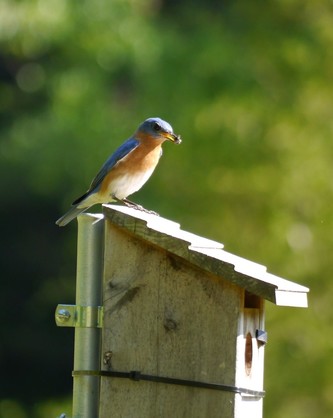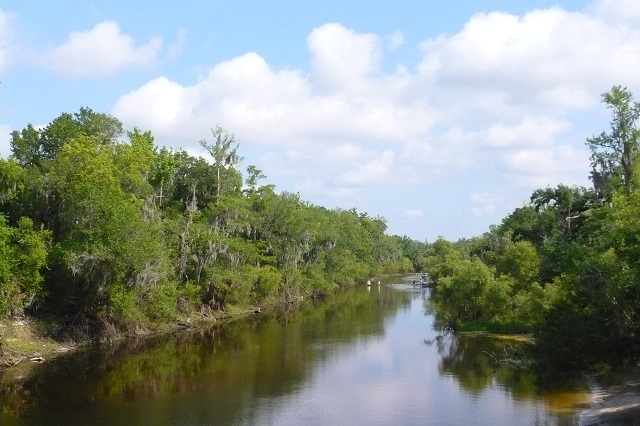
The 25th Great Backyard Bird Count is taking place February 18 – 21!
This event, hosted by the Cornell Lab of Ornithology, National Audubon Society, and Birds Canada, brings people across the world together to celebrate birds. Participants record bird sightings at a location of their choice, be it their backyard or a favorite park or natural area. You can commit as little as 15 minutes of observation to be a part of the count, but it is also a great opportunity for a weekend birding blitz!
To get ready, you can sign up for a free webinar on identification, bird songs, and counting individuals at busy feeders. The webinar will be live on February 16 at 2 p.m. but a recording will also be available for all who sign up.
Learn more at BirdCount.org.

Reminder: It’s not too late to apply for your Wings Over Florida 2021 Big Year certificate and pin. Report how many birds and butterflies you saw last year through our online application and we will put your certificate in the mail.
New this year, in the certificate envelope you’ll find a coupon for $5 off and free shipping on your order of 2021 Big Year merchandise from the Great Florida Birding and Wildlife Trail store.

Different species of birds build their nests in all sorts of different places – high in the treetops, deep in thick shrubs, even hiding in plain sight on the ground. Some birds will only build their nests within the protection of a hole. These cavity nesting species fall into two categories. Primary cavity nesters, such as woodpeckers, can excavate their own holes. Other species including bluebirds, tree swallows, screech owls and kestrels are secondary cavity nesters; they also nest in cavities but must rely on naturally occurring cavities or unused old woodpecker nests.
Nesting sites are an important and finite resource that these secondary cavity nesters need to raise their young. Cavities are most often found in decayed or dead trees with softer wood, but these trees are undesirable to people and typically removed in developed areas and some timberlands. Removing these trees means there are fewer places for birds to nest. To make matters worse, two common invasive species – European Starlings and House Sparrows – are also cavity nesters and compete for the available nesting spaces.
The good news – there is something easy (and fun!) that we as individuals can do to provide safe nest sites for these birds. Now is the time of year to put up your bird houses – also known as nest boxes. Cavity nesting species, such as bluebirds, wrens and chickadees, will soon be out scouting for places to lay their eggs and raise their young.
When buying or building a nest box, you need to keep in mind several must-haves in bird real estate. Some bird houses you see at garden stores are beautiful to us, but don’t necessarily have the features that will make them appealing and safe for birds. A good box should have:
Ventilation – small holes, usually placed under the roof overhang, are important for airflow.
Drainage holes – you don’t want the box to fill with rainwater.
Roof – the roof should be sloped to help keep out rain and should extend over the walls of the box for extra protection.
No perch – predators can potentially use a perch for support. Birds do not require a perch to get in and out of the box.
Predator guard – adding a baffle to the pole supporting your nest box will help deter predators including snakes and raccoons.
Hinged door – you will need to clean out your nest box at the end of the nesting season, and a hinged door makes this much simpler. It will also enable you to easily monitor nests!
Nest boxes aren’t one-size-fits-all. Different species prefer different box shapes and sizes, different entrance hole sizes, and, sometimes, additions such as pine wood shavings or interior ladders.
You will need to consider your landscape carefully when trying to attract a specific species. If you have forest around your house, for example, you wouldn’t want to put up a bluebird house, since these birds prefer plenty of open space. You would be better off trying to attract a wren or chickadee.
It might sound complicated to figure out what boxes are right for your yard but, luckily, there are some excellent tools to help. Cornell Lab of Ornithology’s Right Bird, Right House tool will show you what birds you can potentially attract to your yard and give you detailed descriptions of species’ preferred nest boxes. If you’re handy, you can download the patterns and build your own boxes. FWC’s Planting a Refuge for Wildlife guide is also available for order online. This 40-page guide will give you detailed, Florida-specific information on nest boxes, as well as water sources, feeders, pollinator plants and more.

1885 NE Brownsville Road, Arcadia, 34266
Open: Daily, 8 a.m. to sunset
Contact: 863-491-5333
Website
Two trails at this small rural park pass through the floodplain forest and hardwood hammocks situated alongside the Peace River. The short nature trail in the southwest corner of the park begins at the campground. From here, walk south along the river and follow a scenic cypress-lined stream in search of songbirds, dragonflies and butterflies. A longer trail system north of the campground meanders along the river, the northern boundary and back through the park’s wooded interior, where woodpeckers, Barred Owl, Blue-gray Gnatcatcher and Eastern Towhee occur all year. Spring and fall bring migrants, such as Blackburnian Warbler and Ovenbird. Osprey, Bald Eagle and Swallow-tailed Kite travel along the river corridor, so don’t forget to look up now and then. Mornings and evenings are good times to spot mammals, such as bobcat, marsh rabbit, North American river otter and northern raccoon. Butterflies, such as queen, monarch and gulf fritillary, are quite common. A boat ramp allows paddlers to venture north or south of the park where they might encounter egrets, herons and ibises. Fossil hunters and airboats are sometimes present on the river.

Saturday, February 5
Field Trip: Kathryn Abbey Hanna Park (Jacksonville)
Sunday, February 6
SJCA Young Birders — Fort Mose Walk (St. Augustine)
Birding 101 at William F. Sheffield Regional Park (Jacksonville)
Wednesday, February 9
SJCA Monthly Meeting: Spoonbills with Gen Anderson (Virtual)
Thursday, February 10
Thursday Morning at Matanzas Inlet with Peggy Cook (St. Augustine)
Saturday, February 12
Saturday Morning at Fish Island Preserve (St. Augustine)
Field Trip: Theodore Roosevelt Area (Jacksonville)
Saturday Morning at Fish Island Preserve (St. Augustine)
Thursday, February 17
Conservation Lands in Florida and Benefits to Birds (Virtual)
Friday, February 18 – Monday, February 21
The Great Backyard Bird Count (Anywhere!)
Saturday, February 19
Nature Walk and Workday: Crosby Sanctuary (Orange Park)
Great Backyard Bird Count at Bird Island (Ponte Vedra Beach)
Bird Walk at Masters Tract II (Hastings)
Wildlife-Friendly Yards Tour (Tallahassee)
Monday, February 21
Monthly Program: Getting to Know Shorebirds (Virtual)
Saturday, February 26
Open House at Crosby Sanctuary (Orange Park)
Do you know about any other bird or wildlife-related events going on in Florida? Help spread the word by letting us know! Send in the times, dates, locations and contacts to WildlifeViewing@MyFWC.com for posting on the Great Florida Birding and Wildlife Trail website.
Events must be related to birds or other wildlife and must be open to the public. Examples include interpretive programming, webinars, summer camps and family programs.
|